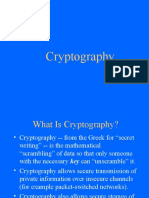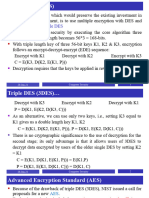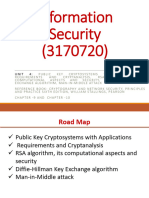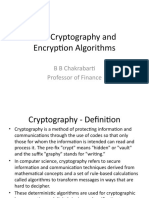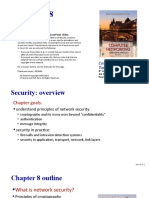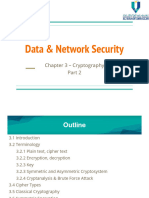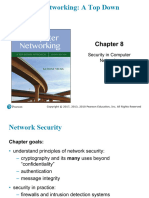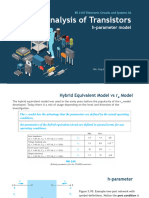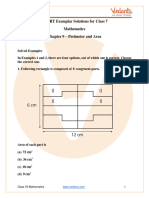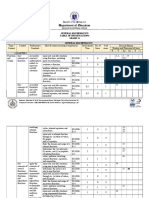Network Security
CSC 307
Why threat or cybercrime?
• Low cost of Internet usage
• High level of IT innovation/education
• Personal gain e.g. yahoo-yahoo hackers
• Covering of corruption e.g. burning of data,
computer room, building to prevent evidence
• Targets: data, storage device, web sites
How is threat performed
Types of Internet Threat
Threats…
Data encryption
• It means en-scrambling of data to make it meaningless to receiver
• Plaintext — an original message before it has been encrypted
• Cyphertext — a message after it has been encrypted
• Encryption key — a short bit string used to encrypt a message
• Decryption key — a short bit string used to decrypt a message
• encryption is a function that takes two arguments: a key, K1, and a plaintext message to be
encrypted, M. and produces an
• encrypted version of the message, cyphertext C i.e.
• C = encrypt (K1, M)
• A decrypt function reverses the mapping to produce the original message:
• M = decrypt (K2, C)
Public Key encryption
• The encryption functions can be expressed as:
• M = decrypt ( public_u1 , encrypt ( private_u1,
M) )
Private vs Public Key
• In a private key system, each pair of communicating entities share a
single key that serves as both an encryption key and a decryption
key.
• A public key system assigns each entity a pair of keys. One of the
user’s keys, called the private key, is kept secret, while the other,
called the public key
• The encryption function has the mathematical property that a
plaintext message encrypted with the public key cannot be
decrypted except with the private key, and a plaintext message
encrypted with the private key cannot be decrypted except with the
public key.
RSA Algorithm
• Developed it in 1977. Namely: Ronald Rivest, Adi Shamir, and
Leonard Adleman
• 1. Key Generation Algorithm
• The algorithm states that:
• Generate two large random primes, p and q
• Compute n = pq and φ = (p-1)(q-'1).
• Choose an integer e, 1 < e < φ, such that gcd(e, φ) = 1
• i.e. e <n, e has no common factors other than 1 with φ
• Compute the secret exponent d, 1 < d < φ,such that ed mod φ=1.
• The public key is (n, e) and the private key (d, p, q). Keep all the
values d, p, q and φ secret
RSA…
• 2. Encryption
• A sender A on a network does the following:
• Obtains the recipient B's public key (n, e).
• Represents the plaintext message as a positive
integer m, 1 < m < n
• Computes the cipher text
• c = me mod n (1)
• Sends the cipher text c to B
RSA …
• 3. Decryption
• Recipient B does the following:-
• Uses his private key (n, d) to compute
• m = cd mod n. (2)
• Extracts the plaintext from the message
representative m.
• E,g. p=5, q=7
• N=35, z=24
• If e=5. 5 and 24 have no common factor.
• D=29 since 5*29-1 is divisible by 24
• M=love
• What is c?
Other Encryption Techniques
• Data Encryption standard (DES)
• Advanced Encryption Standard (AES)
• Assignment: Compare DES with AES





